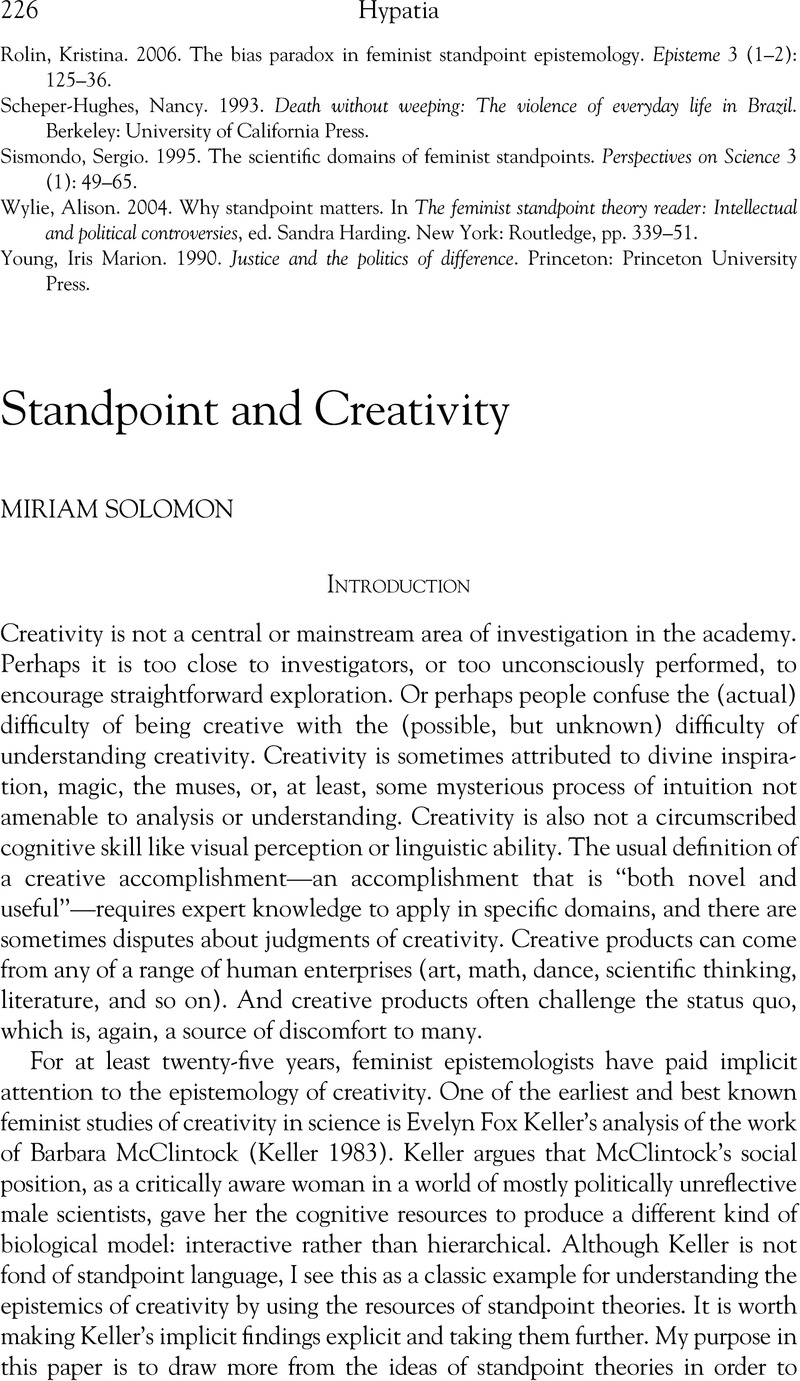Crossref Citations
This article has been cited by the following publications. This list is generated based on data provided by Crossref.
Warner, Leah R.
Settles, Isis H.
and
Shields, Stephanie A.
2016.
Invited Reflection.
Psychology of Women Quarterly,
Vol. 40,
Issue. 2,
p.
171.
Garneau, Marie-Claude
2017.
La conférence-performance féministe pour réfléchir à la fluidité des identités.
Nouvelles pratiques sociales,
Vol. 28,
Issue. 1,
p.
288.
Copeland, Samantha Marie
2018.
“Fleming Leapt on the Unusual like a Weasel on a Vole”: Challenging the Paradigms of Discovery in Science.
Perspectives on Science,
Vol. 26,
Issue. 6,
p.
694.
Lee, Clarissa Ai Ling
2019.
What Science Fiction Can Demonstrate About Novelty in the Context of Discovery and Scientific Creativity.
Foundations of Science,
Vol. 24,
Issue. 4,
p.
705.
Perkins, Miriam Y.
2019.
The Praxis of Prophetic Voice: Martin Luther King, Jr. and Strategies for Resistance.
Black Theology,
Vol. 17,
Issue. 3,
p.
241.
Peters, Uwe
2021.
Hidden figures: epistemic costs and benefits of detecting (invisible) diversity in science.
European Journal for Philosophy of Science,
Vol. 11,
Issue. 1,
Gagné-Julien, Anne-Marie
2021.
Towards a socially constructed and objective concept of mental disorder.
Synthese,
Vol. 198,
Issue. 10,
p.
9401.
Copeland, Samantha
2022.
The Art of Serendipity.
p.
41.
Blok, Vincent
2022.
The Role of Human Creativity in Human-Technology Relations.
Philosophy & Technology,
Vol. 35,
Issue. 3,
Suehn, Megan
Kassan, Anusha
Russell-Mayhew, Shelly
Callaghan, Tonya
and
Cohen, Julie
2023.
Feminism - Corporeality, Materialism, and Beyond.
Tilley, Elspeth
2024.
Applied theatre as transdisciplinary research:
JustUs
and the quest for second-order change
.
Research in Drama Education: The Journal of Applied Theatre and Performance,
Vol. 29,
Issue. 1,
p.
214.
Marozzo, Veronica
Crupi, Antonio
Abbate, Tindara
Cesaroni, Fabrizio
and
Corvello, Vincenzo
2024.
The impact of watching science fiction on the creativity of individuals: The role of STEM background.
Technovation,
Vol. 132,
Issue. ,
p.
102994.
Whiteley, Ella Kate
2024.
Attentional discrimination and victim testimony.
Philosophical Psychology,
Vol. 37,
Issue. 6,
p.
1407.



